 W
WViolence is "the use of physical force so as to injure, abuse, damage, or destroy". Other definitions are also used, such as the World Health Organization's definition of violence as "the intentional use of physical force or power, threatened or actual, against oneself, another person, or against a group or community, which either results in or has a high likelihood of resulting in injury, death, psychological harm, maldevelopment, or deprivation."
 W
WThe depiction of violence in high culture art has been the subject of considerable controversy and debate for centuries. In Western art, graphic depictions of the Passion of Christ have long been portrayed, as have a wide range of depictions of warfare by later painters and graphic artists. Theater and, in modern times, cinema have often featured battles and violent crimes, while images and descriptions of violence have always been a part of literature. Margaret Bruder states that the aestheticization of violence in film is the depiction of violence in a "stylistically excessive", "significant and sustained way" in which audience members are able to connect references from the "play of images and signs" to artworks, genre conventions, cultural symbols, or concepts.
 W
WA blunt instrument is any solid object used as a weapon, which damages its target by applying direct mechanical force, and has no penetrating point or edge, or is wielded so that the point or edge is not the part of the weapon that inflicts the injury. Blunt instruments may be contrasted with edged weapons, which inflict injury by cutting or stabbing, or projectile weapons, where the projectiles, such as bullets or arrows, are accelerated to a damaging speed.
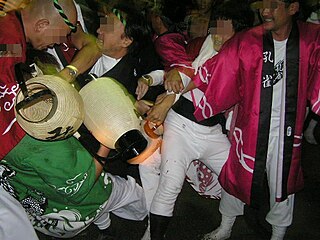 W
WBrawling, in law, was the offence of quarrelling, or creating a disturbance in a church or churchyard. Brawling was covered in ecclesiastic courts until 1860. It has rarely been prosecuted since then.
 W
WBystander intervention is a type of training used in post-secondary education institutions to prevent sexual assault or rape, binge drinking and harassment and unwanted comments of a racist, homophobic, or transphobic nature. A bystander is a person who is present at an event, party, or other setting who notices a problematic situation, such as a someone making sexual advances on a drunk person. The bystander then takes on personal responsibility and takes action to intervene, with the goal of preventing the situation from escalating.
 W
WCommunal violence is a form of violence that is perpetrated across ethnic or communal lines, the violent parties feel solidarity for their respective groups, and victims are chosen based upon group membership. The term includes conflicts, riots and other forms of violence between communities of different religious faith or ethnic origins.
 W
WCrime and violence affect the lives of millions of people in Latin America. Some consider social inequality to be a major contributing factor to levels of violence in Latin America, where the state fails to prevent crime and organized crime takes over State control in areas where the State is unable to assist the society such as in impoverished communities. In the years following the transitions from authoritarianism to democracy, crime and violence have become major problems in Latin America. The region experienced more than 2.5 million murders between 2000 and 2017.
 W
WDeadly force, also known as lethal force, is use of force that is likely to cause serious bodily injury or death to another person. In most jurisdictions, the use of deadly force is justified only under conditions of extreme necessity as a last resort, when all lesser means have failed or cannot reasonably be employed.
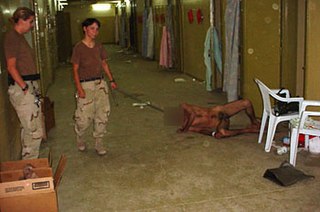 W
WDehumanization is the denial of full humanness in others and the cruelty and suffering that accompanies it. A practical definition refers to it as the viewing and treatment of other persons as though they lack the mental capacities that are commonly attributed to human beings. In this definition, every act or thought that regards a person as "less than" human is dehumanization.
 W
WEthnic cleansing is the systematic and systemic forced removal of ethnic, racial and/or religious groups from a given territory by a more powerful ethnic group, often with the intent of making it ethnically homogeneous. The forces which may be applied may be various forms of forced migration, intimidation, as well as genocide and genocidal rape.
 W
WEye-gouging is the act of pressing or tearing the eye using the fingers or instruments. Eye-gouging involves a very high risk of eye injury, such as eye loss or blindness.
 W
WFootball hooliganism or soccer hooliganism is disorderly, violent or destructive behaviour perpetrated by spectators at association football events. Football hooliganism normally involves conflict between gangs, in English known as football firms, formed to intimidate and attack supporters of other teams. Other English-language terms commonly used in connection with hooligan firms include "army", "boys", "bods", "casuals", and "crew". Certain clubs have long-standing rivalries with other clubs and hooliganism associated with matches between them is likely to be more severe.
 W
WGlassing is a physical attack using a glass or bottle as a weapon. Glassings can occur at bars or pubs where alcohol is served and such items are readily available. The most common method of glassing involves the attacker smashing an intact glass in the face of the victim. However, the glass may be smashed before the attack, and then gripped by the remaining base of the glass or neck of the bottle with the broken shards protruding outwards. Glassing is easily prevented by using containers made from plastic or tempered glass instead, but they suffer from unpleasant feel (plastic) and higher expense. These alternative containers are slowly being adopted in areas with a high frequency of glassing, such as the United Kingdom and Australia. In New Zealand, a similar phenomenon is referred to as "bottling".
 W
WGun-related violence is violence committed with the use of a gun. Gun-related violence may or may not be considered criminal. Criminal violence includes homicide, assault with a deadly weapon, and suicide, or attempted suicide, depending on jurisdiction. Non-criminal violence includes accidental or unintentional injury and death. Also generally included in gun violence statistics are military or para-military activities.
 W
WHomo homini lupus, or in its unabridged form Homo homini lupus est, is a Latin proverb meaning "A man is a wolf to another man," or more tersely "Man is wolf to man." It has meaning in reference to situations where people are known to have behaved in a way comparably in nature to a wolf. The wolf as a creature is thought, in this example, to have qualities of being predatory, cruel, inhuman i.e. more like an animal than civilized.
 W
WLegislative violence broadly refers to any violent clashes between members of a legislature, often physically, inside the legislature and triggered by divisive issues and tight votes. Such clashes have occurred in many countries across time, and notable incidents still regularly occur.
 W
W"Live by the sword, die by the sword" is a proverb in the form of a parallel phrase, derived from the Gospel of Matthew : "Then said Jesus unto him, Put up again thy sword into his place: for all they that take the sword shall perish with the sword."
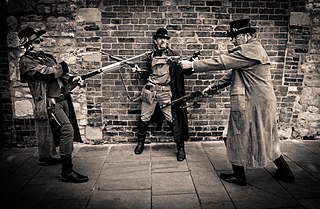 W
WA Mexican standoff is a confrontation in which no strategy exists that allows any party to achieve victory. Any party initiating aggression might trigger their own demise. At the same time, the parties are unable to extricate themselves from the situation without suffering a loss - effectively, a situation of mutual zugzwang. As a result, all participants need to maintain the strategic tension, which remains unresolved until some outside event makes it possible to resolve it.
 W
WMurder is the unlawful killing of another human without justification or valid excuse, especially the unlawful killing of another human with malice aforethought. This state of mind may, depending upon the jurisdiction, distinguish murder from other forms of unlawful homicide, such as manslaughter. Manslaughter is killing committed in the absence of malice, brought about by reasonable provocation, or diminished capacity. Involuntary manslaughter, where it is recognized, is a killing that lacks all but the most attenuated guilty intent, recklessness.
 W
WOverkill is the use of excessive force or action that goes further than what is necessary to achieve its goal. It may be a literal term referring to physical damage, though it is also used in colloquial conversation as a metaphor. An example is killing an ant with a sledgehammer.
 W
WPatient-initiated violence is a specific form of workplace violence that affects healthcare workers that is the result of verbal, physical, or emotional abuse from a patient or family members of whom they have assumed care. Nurses represent the highest percentage of affected workers; however, other roles include physicians, therapists, technicians, home care workers, and social workers. Non clinical workers are also assaulted, for example, security guards, cleaners, clerks, technicians. The Occupational Safety and Health Administration used 2013 Bureau of Labor Statistics and reported that healthcare workplace violence requiring days absent from work from patients represented 80% of cases. In 2014, a survey by the American Nurses Association of 3,765 21% of nurses and nursing students reported physical abuse and over 50% reported verbal abuse within a 12-month period. Causes for patient outbursts vary, including psychiatric diagnosis, under the influence of drugs or alcohol, or subject to a long wait time. Certain areas are more at risk for this kind of violence including healthcare workers in psychiatric settings, emergency or critical care, or long-term care and dementia units.
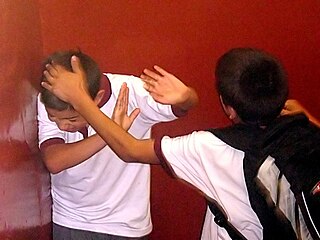 W
WPhysical abuse is any intentional act causing injury or trauma to another person or animal by way of bodily contact. In most cases, children are the victims of physical abuse, but adults can also be victims, as in cases of domestic violence or workplace aggression. Alternative terms sometimes used include physical assault or physical violence, and may also include sexual abuse. Physical abuse may involve more than one abuser, and more than one victim.
 W
WPrison violence is a daily occurrence due to the diverse inmates with varied criminal backgrounds in penitentiaries. The three different types of attacks are inmate on inmate, inmate on guard, and self-inflicted. These attacks can either be impulsive and spontaneous or well-planned out and premeditated. Factors such as gang rivalries, overcrowding, minor disputes, and prison design contribute to violent attacks. Prisons are trying to avoid, or at least better deal with these situations by being proactive. They are taking steps like placing violent convicts and gang leaders into solitary confinement, balancing the cells by critically examining each inmate to see where they are likely to reside peacefully, reducing blind spots, and training as well as educating the officers.
 W
WRoad rage is aggressive or angry behavior exhibited by motorists. These behaviors include rude and verbal insults, physical threats or dangerous driving methods targeted toward another driver or non-drivers such as pedestrians or cyclists in an effort to intimidate or release frustration. Road rage can lead to altercations, damage to property, assaults and collisions that result in serious physical injuries or even death. Strategies include long horn honks, swerving, tailgating, brake checking, and attempting to fight.
 W
WSadistic personality disorder is a personality disorder involving sadism which appeared in an appendix of the Diagnostic and Statistical Manual of Mental Disorders (DSM-III-R). The later versions of the DSM do not include it.
 W
WSenseless violence or zinloos geweld (Dutch) is a term frequently used by among others the media, politicians and NGOs to define the nature of several shocking events in Belgium and the Netherlands in recent years. The use of the term is politically charged and may not reflect any unique elements of any particular crime given that label.
 W
WA shootout, also called a firefight or gunfight, is a gun battle between armed groups. A shootout often, but not necessarily, pits law enforcement against criminal elements; it could also involve two groups outside of law enforcement, such as rival gangs. A shootout in a war-like context would usually be considered a battle, rather than a shootout. Shootouts are often portrayed in action films and Western films.
 W
WA stabbing is penetration or rough contact with a sharp or pointed object at close range. Stab connotes purposeful action, as by an assassin or murderer, but it is also possible to accidentally stab oneself or others. Stabbing differs from slashing or cutting in that the motion of the object used in a stabbing generally moves perpendicular to and directly into the victim's body, rather than being drawn across it.
 W
WStone throwing or rock throwing is the act of throwing a stone. When it is directed at another person, it is often considered a form of criminal assault.
 W
WStrangling is compression of the neck that may lead to unconsciousness or death by causing an increasingly hypoxic state in the brain. Fatal strangling typically occurs in cases of violence, accidents, and is one of two main ways that hanging causes death.
 W
WStreet fighting is hand-to-hand combat in public places, between individuals or groups of people. Unlike sport fighting, a street fight might involve weapons, multiple opponents, and no rules. The venue is usually a public place and the fight sometimes results in serious injury or occasionally even death. Some street fights can be gang-related.
 W
WA tantrum, temper tantrum, fit or hissy fit is an emotional outburst, usually associated with those in emotional distress, that is typically characterized by stubbornness, crying, screaming, violence, defiance, angry ranting, a resistance to attempts at pacification, and, in some cases, hitting, and other physically violent behavior. Physical control may be lost; the person may be unable to remain still; and even if the "goal" of the person is met, they may not be calmed. Throwing a temper tantrum can lead to a child being placed in timeout, being grounded or even being suspended from school for older school age children. A tantrum may be expressed in a tirade: a protracted, angry speech.
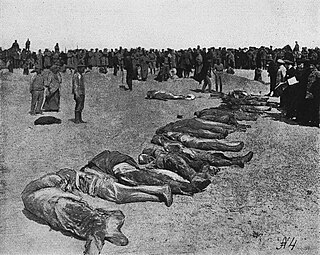 W
WTerror is a policy of political repression and violence intended to subdue political opposition. The term was first used for the Reign of Terror during the French Revolution.
 W
WThe use of force, in the context of law enforcement, may be defined as the "amount of effort required by police to compel compliance by an unwilling subject".
 W
WA use of force continuum is a standard that provides law enforcement officers and civilians with guidelines as to how much force may be used against a resisting subject in a given situation. In some ways, it is similar to the U.S. military's escalation of force (EOF). The purpose of these models is to clarify, both for law enforcement officers and civilians, the complex subject of use of force. They are often central parts of law enforcement agencies' use of force policies. Various criminal justice agencies have developed different models of the continuum, and there is no universal or standard model. Generally, each different agency will have their own use of force policy. Some agencies may separate some of the hand-to-hand based use of force. For example, take-downs and pressure point techniques may be one step before actual strikes and kicks. Also, for some agencies the use of aerosol pepper spray and electronic control devices (TASER) may fall into the same category as take-downs, or the actual strikes.
 W
WThe phrase "violence begets violence" means that violent behaviour promotes other violent behaviour, in return. The phrase has been used since the 1830s.
 W
WWar is an intense armed conflict between states, governments, societies, or paramilitary groups such as mercenaries, insurgents and militias. It is generally characterized by extreme violence, aggression, destruction, and mortality, using regular or irregular military forces. Warfare refers to the common activities and characteristics of types of war, or of wars in general. Total war is warfare that is not restricted to purely legitimate military targets, and can result in massive civilian or other non-combatant suffering and casualties.
 W
WWorkplace violence (WPV) or occupational violence refers to violence, usually in the form of physical abuse or threat, that creates a risk to the health and safety of an employee or multiple employees. The National Institute for Occupational Safety and Health defines worker on worker, personal relationship, customer/client, and criminal intent all as categories of violence in the workplace. These four categories are further broken down into three levels: Level one displays early warning signs of violence, Level two is slightly more violent, and level three is significantly violent. Many workplaces have initiated programs and protocols to protect their workers as the Occupational Health Act of 1970 states that employers must provide an environment in which employees are free of harm or harmful conditions.